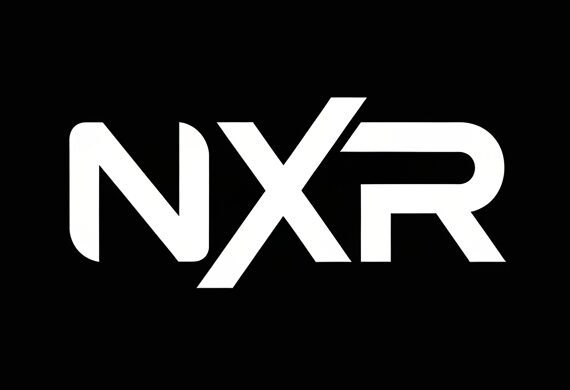Introduction: Understanding the Dropshipping Phenomenon
What is dropshipping? This fundamental question has become increasingly relevant in today’s digital economy. Dropshipping is a revolutionary order fulfillment method that allows entrepreneurs to sell products without maintaining inventory. In this comprehensive guide, we’ll explore every aspect of this business model, providing you with the knowledge needed to understand and potentially leverage dropshipping in 2025.
The global dropshipping market has experienced explosive growth, with projections indicating it will reach $476.1 billion by 2026. This growth demonstrates the model’s viability and increasing adoption among online entrepreneurs worldwide.
What Is Dropshipping? A Detailed Definition
Dropshipping is a supply chain management method where a store doesn’t keep the products it sells in stock. Instead, when a store sells a product using the dropshipping model, it purchases the item from a third party—typically a wholesaler or manufacturer—who then ships it directly to the customer. This means the merchant never sees or handles the product physically.
The core principle of how dropshipping works revolves around three key players:
- The customer who places an order
- The retailer who markets and sells the product
- The supplier who manufactures and ships the product
The Complete Dropshipping Process: Step-by-Step
Understanding the practical implementation of dropshipping is crucial. Here’s the detailed workflow:
Stage 1: Business Foundation
- Retailer-Supplier Agreement
- Establish formal partnership with suppliers
- Set pricing terms and conditions
- Define shipping and return policies
- Product Catalog Setup
- Select products from supplier inventory
- Upload product information to online store
- Set retail prices and product descriptions
Stage 2: Customer Order Process
- Order Placement
- Customer browses online store and selects products
- Completes purchase through secure payment gateway
- Receives order confirmation from retailer
- Order Processing
- Retailer receives order and customer information
- Verifies payment and order details
- Prepares order for supplier fulfillment
Stage 3: Supplier Fulfillment
- Order Transmission
- Retailer forwards order details to supplier
- Provides customer shipping information
- Confirms product availability
- Shipping and Delivery
- Supplier picks, packs, and ships order
- Provides tracking information to retailer
- Customer receives product directly from supplier
Key Advantages of Dropshipping in 2025
Low Barrier to Entry
Minimal startup costs make dropshipping accessible to aspiring entrepreneurs. Unlike traditional retail models that require significant inventory investment, dropshipping allows you to begin with as little as $100-$500.
Reduced Operational Complexity
- No inventory management required
- Elimination of warehouse costs
- Automated order processing
- Scalable business model
Flexibility and Location Independence
Dropshipping businesses can be managed from anywhere with an internet connection, providing unparalleled geographical freedom and work-life balance.
Challenges and Limitations of Dropshipping
Intense Competition
The low barrier to entry results in fierce market competition, particularly in popular product categories. Success requires strategic differentiation and unique value propositions.
Supply Chain Dependencies
- Limited quality control over products
- Inventory synchronization challenges
- Shipping complexity with multiple suppliers
- Supplier reliability concerns
Lower Profit Margins
Competitive pricing pressure often leads to slim profit margins. Successful dropshippers must focus on value-added services and effective marketing strategies.
Dropshipping vs. Traditional E-commerce: Key Differences
| Aspect | Dropshipping | Traditional E-commerce |
|---|---|---|
| Inventory Investment | None required | Significant capital needed |
| Order Fulfillment | Handled by supplier | Managed by retailer |
| Startup Costs | $100 – $500 | $1,000 – $5,000+ |
| Scalability | Highly scalable | Limited by infrastructure |
| Profit Margins | 15-30% | 30-60% |
| Control Over Process | Limited | Complete |
Getting Started with Dropshipping in 2025
Step 1: Niche Selection
Choose a profitable niche that aligns with market demand and your interests. Consider factors like:
- Market size and growth potential
- Competition level
- Profit margin expectations
- Supplier availability
Step 2: Supplier Research and Vetting
Identify reliable suppliers through:
- Industry directories (AliExpress, SaleHoo)
- Trade shows and exhibitions
- Supplier review platforms
- Direct manufacturer contact
Step 3: E-commerce Platform Setup
Select and configure your online store using:
- Shopify or WooCommerce
- Professional website themes
- Secure payment gateways
- SEO-optimized product pages
Step 4: Marketing and Customer Acquisition
Implement multi-channel marketing strategies:
- Social media marketing
- Search engine optimization
- Email marketing campaigns
- Content marketing
Advanced Dropshipping Strategies for 2025
Automation Implementation
Leverage technology to streamline operations:
- Automated order processing
- Inventory synchronization
- Customer service automation
- Marketing automation
Brand Building and Differentiation
Move beyond generic products by:
- Developing a unique brand identity
- Creating custom packaging
- Offering exceptional customer service
- Building a community around your brand
Hybrid Business Models
Combine dropshipping with other approaches:
- Stock best-sellers while dropshipping complementary items
- Private labeling for exclusive products
- Multi-channel selling across various platforms
Common Dropshipping Mistakes to Avoid
- Choosing Unreliable Suppliers
- Always vet suppliers thoroughly
- Order product samples before listing
- Maintain backup supplier relationships
- Neglecting Customer Service
- Implement responsive support systems
- Set clear communication expectations
- Handle returns and issues professionally
- Underestimating Marketing Costs
- Allocate sufficient budget for customer acquisition
- Track marketing ROI meticulously
- Diversify marketing channels
- Ignoring Legal Compliance
- Understand tax obligations
- Comply with consumer protection laws
- Maintain proper business documentation
The Future of Dropshipping: 2025 Trends and Predictions
Artificial Intelligence Integration
AI-powered tools will revolutionize:
- Product selection and pricing
- Customer service automation
- Marketing optimization
- Supply chain management
Sustainability Focus
Consumers increasingly demand:
- Eco-friendly packaging
- Carbon-neutral shipping
- Ethical manufacturing
- Sustainable product options
Hyper-Personalization
Advanced personalization through:
- AI-driven product recommendations
- Customized shopping experiences
- Personalized marketing messages
- Tailored customer service
Conclusion: Is Dropshipping Right for You?
Understanding what dropshipping is provides the foundation for evaluating its potential for your entrepreneurial journey. This business model offers unprecedented accessibility to e-commerce while presenting unique challenges that require strategic thinking and diligent execution.
The key to dropshipping success in 2025 lies in:
- Thorough market research
- Strategic supplier partnerships
- Effective marketing execution
- Exceptional customer experience
- Continuous adaptation to market changes
While dropshipping isn’t a “get rich quick” scheme, it represents a viable business model for entrepreneurs willing to invest time, effort, and strategic thinking. By applying the principles outlined in this guide, you can build a sustainable online business that leverages the power of dropshipping.
Ready to start your dropshipping journey? Begin by researching potential niches and suppliers, and remember that success comes from consistent effort and continuous learning in this dynamic e-commerce landscape.




